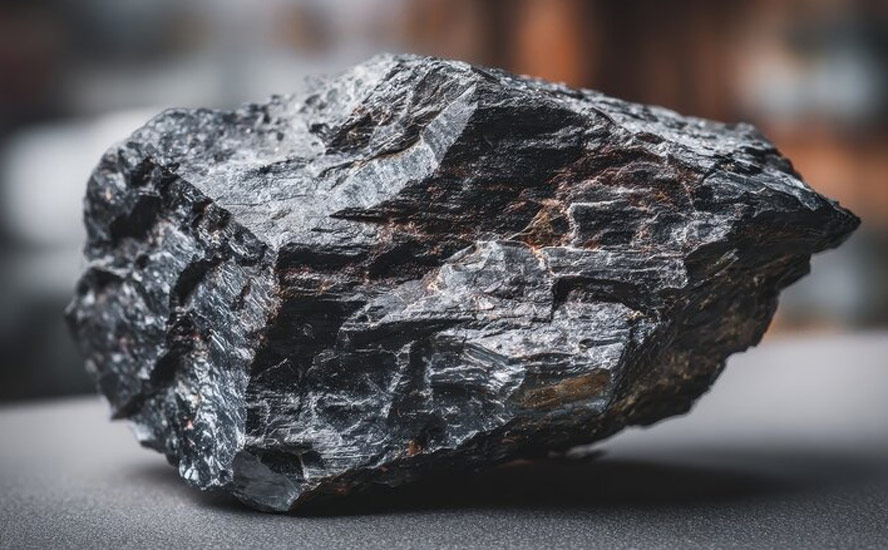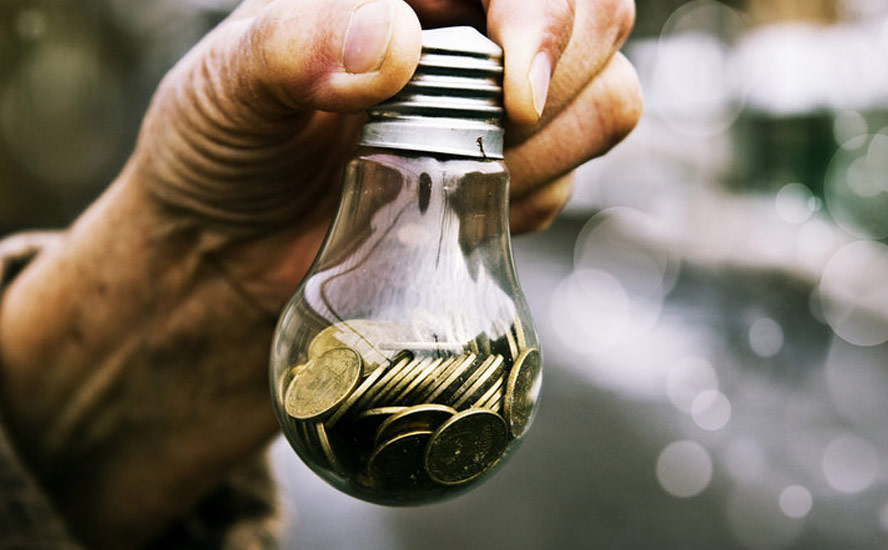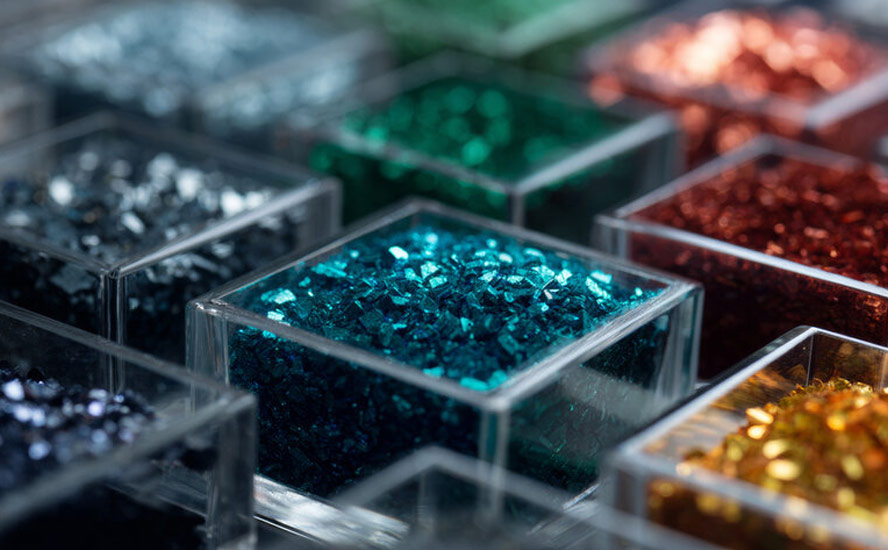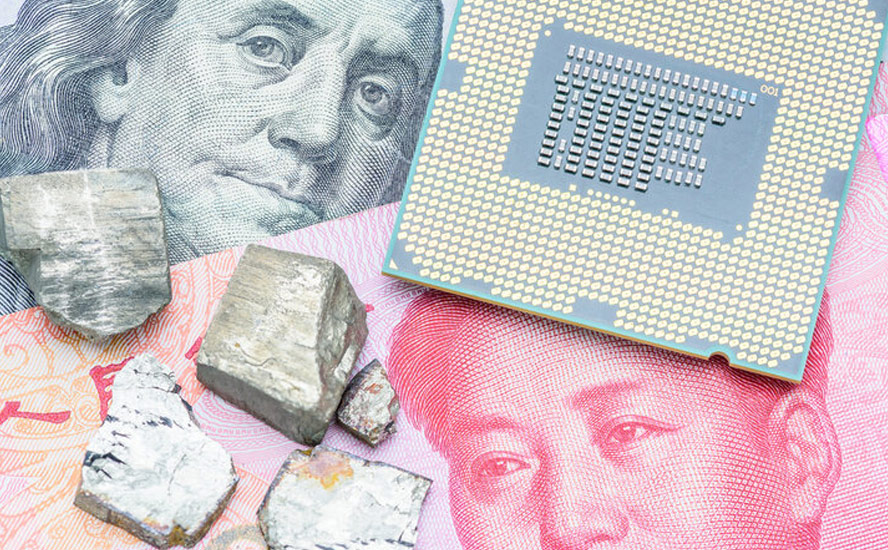Australian lithium mines not viable at current prices

2019.11.06
Australia’s Mineral Resources (ASX:MIN) said last week it is pausing operations at its Wodgina lithium project, a joint venture with US-based Albemarle, due to “challenging lithium market conditions.”
“Given the current challenging market conditions for lithium, the MARBL Lithium Joint Venture believes there is more value to be delivered in the long term by placing Wodgina on care and maintenance now,” MIN Managing Director Chris Ellison said, on the same day a transaction concluded giving US-based Albemarle a 60% stake in the facility, located in Western Australia.
Market conditions are difficult primarily for two reasons: low prices due to oversupply from Australian hard-rock lithium producers, most of whom sell their spodumene concentrate to China; and reduced Chinese demand for lithium, after Beijing cut EV subsidies that made electric vehicles more affordable.
Demand has also been dented by bottlenecks in Chinese chemical conversion facilities, that make lithium hydroxide from spodumene concentrate.
According to Benchmark Mineral Intelligence, the price of spodumene concentrate containing 6% lithium fell 5% in October to between $480 and $550 a tonne, nearly half of the $900 per tonne it fetched in July, 2018.
The lithium market tracker said industry sources “expect spodumene prices to stabilize in the coming months, however there will be little upward pressure and the supply chain will have to clear a significant backlog of material before margins improve.”
Prices are better in South America, where China buys lithium carbonate from lithium brines produced by Chile and Argentina. There, free-on-board prices have slipped 30% but are still over $10,000 a tonne, Benchmark Minerals states in a Nov. 3 market summary.
China imports lithium from two sources: hard-rock lithium mines in Australia, and South American lithium brines. China is also the third largest lithium producer in the world, behind Australia and Chile – but most of what China produces is technical-grade lithium, unsuitable for batteries without being upgraded. Australia’s 6% spodumene concentrate must also be converted into battery-grade material, at considerable expense.
Not all lithium is created equal.
Even with the best market conditions, hard-rock lithium mines have a tough time competing with brine operations. We knew this before the lithium price boom of 2014-17 made previously uneconomic spodumene deposits viable. Now that prices have dropped, the chickens are coming home to roost.
Understanding this requires an explanation of the difference between lithium brines and hard rock/ spodumene mines.
Hard rock lithium miners have two problems facing them when competing with brine economics – first, most have large capital costs for start-up, and second, their production costs are roughly twice what they are for the brine exploitation process. These higher production costs are because of the different extraction processes used.
In brine operations, when lithium chloride reaches optimum concentration in a pond, the brine is pumped to a recovery plant and treated with soda ash, precipitating lithium carbonate. The carbonate is then removed through filtration, dried and shipped.
In the case of production from pegmatites the process is:
- Mining
- Concentration to a higher grade
- Calcination at 1,100 degrees Celsius to produce acid-leachable beta spodumene
- Treated with sulfuric acid at 250 degrees Celsius
- Conversion of the lithium sulfate solution with sodium carbonate
The high expense and complexity of processing spodumene means that most mines ship it to China for further refining.
Those that do this currently receive about $500 a tonne for their low-grade (6%) concentrate; brine lithium miners get around $12,000 a tonne for lithium hydroxide and $10,000 a tonne for lithium carbonate.
$500 per tonne versus $10,000 or $12,000/t. Which business would you rather be in? At $900/t a few years ago, Australian lithium producers thought they could make a profit mining pegamites despite the higher capital and production costs. Many ramped up production to take advantage of record-high prices, creating a supply overhang.
According to Benchmark Mineral Intelligence, by mid-2018, spodumene had overtaken brine as the leading source of chemical feedstock production. From just one spodumene mine in 2016 – Greenbushes in Australia – the number of active hard-rock mines grew to nine by 2018 year-end.
Since then, the $400 plunge in spodumene prices has really hurt Australian lithium miners. On Sept. 2, Reuters reported, Shares in Australian miners such as Mineral Resources, Galaxy Resources, Altura Mining, Lithium Australia, and Pilbara are down between 15% and 68% this year compared with a 20% fall in the price of spodumene.
They might be wishing they hadn’t all jumped on the spodumene wagon at the same time.
By contrast, brine producers in Chile and Argentina, and Albemarle’s Silver Peak Mine in Nevada, produce battery-grade lithium through evaporation.
Chile’s Salar de Atacama is ideal for lithium mining because the lithium-containing brine ponds evaporate quickly and the solution is concentrated into lithium carbonate and lithium hydroxide used in EV batteries. One complicating factor is the lithium often occurs with magnesium (Mg).
The Mg has to be removed by adding slaked lime to the brine, which reacts with the magnesium salts and removes them. A common industry axiom says that the ratio of Mg to Li in brines must be below 9:1 or 10:1 to be economical.
A more “political” obstacle is the social unrest happening in that part of the world, along with a newly invigorated sense of resource nationalism.
Back when Chile was governed by right-wing dictator Pinochet, lithium was classified as a strategic resource due to its use in nuclear fission. As a result, private mining companies are required to partner with the state, as Albemarle has done, or obtain a special permit to mine lithium on their own. However the government has yet to provide guidelines on obtaining this permit, called a CEOL, and that has spooked a number of would-be foreign investors. A uniform royalty and tax regime is also lacking.
Since lithium prices started climbing in 2014, Wealth Minerals is the only new player to receive permitting required to complete exploration work in the Salar de Atacama, having partnered with Chilean state mining company Enami.
Earlier this year Santiago-based SQM delayed a planned expansion to more than double its production of lithium carbonate to 120,000 tonnes, until the end of 2021. Competitor Albemarle has sparred with the Chilean Economic Development Agency (CORFU) over increasing its quota to 2 million tonnes lithium carbonate equivalent (LCE), finally reaching an agreement this past January.
Reuters quotes Joe Lowry, an independent lithium industry consultant, saying that Chile is “disappointing the industry” and that if expansion plans keep getting pushed farther out, it could cause “uncertainty and complexity in supply chains”. What would Tesla/ Panasonic, Chevy or Nissan do if they no longer had a steady supply of lithium?
The second largest producer also has problems with water.
The number one and two lithium giants, SQM and Albemarle, for years have blamed each other for over-exploiting their water rights in the Salar de Atacama, where they operate just 12 miles apart. The Chilean government, fearing a water shortage, last summer put restrictions on water use in the salar.
Argentina is considered to be a risky place for mining companies to do business. Despite the end of 12 years of leftist rule, a shaky economy and a lack of regulatory clarity has meant the mining industry and its investors are hesitant.
In September thousands of protesters hit the streets of Buenos Aires demanding the government take action to address the deepening economic crisis, amid reports of rising hunger.
Also, lithium grades in Argentina are low, around 600 milligrams a liter, compared to Chile’s Salar de Atacama – the main production area – which average 863 mg/l.
How about Bolivia, the third side of the “lithium triangle” stretched across Chile, Argentina and Bolivia? Lithium contained in Bolivian salars are higher in altitude, not as dry, and contain more magnesium and potassium than in neighboring Chile, making the extraction process much more complicated, and costly.

The Salar de Uyuni’s higher rainfall and cooler climate mean that its evaporation rate is not even half that of Chile’s Salar de Atacama.
Bolivia also has limited infrastructure compared to Chile, Argentina or the US, and lacks access to the sea, not to mention a leftist government led by Evo Morales who has proven to be a resource nationalist prone to expropriating foreign-owned mines and oil and gas assets.
For more read Bolivia: Where revolutionaries and lithium miners go to die
The Bolivian government this week canceled a joint venture with a German company, ACI Systems Alemania (ACISA), to develop a large lithium project in its southern highlands. Spanish news agency EFE said President Morales overturned an earlier order permitting the $250-million lithium operation, amid protests in Potosi, where the JV planned to build a lithium hydroxide plant. The protesters wanted a higher royalty percentage than they were offered.
Cypress Development Corp. (TSX-V:CYP)
Given the problems we have outlined thus far in just about every country that mines lithium, where can an end-user go for stable pricing and secure supply? How about Nevada, in 2018 voted the best jurisdiction for mining investment in the world?
Globally, battery makers and automobile manufacturers are scrambling to ensure they have enough supply of the silvery-white metal.
A Reuters analysis shows that automakers are planning on spending a combined $300 billion on electrification in the next decade.
How will the United States obtain enough lithium for the electric-vehicle storm of demand that is brewing?
The US only produces 1% of global lithium supply and 7% of refined lithium chemicals, versus China’s 51%. The country is about 70% dependent on imported lithium.
To lessen US lithium dependency will require the building of a mine to battery to EV supply chain in North America.
The first step is to develop new North American lithium mines.
According to Visual Capitalist, Silver Peak only produces 1,000 tonnes per year of lithium hydroxide, within a current lithium market of roughly 280,000 tonnes per annum of lithium carbonate equivalent (LCE), a term that encompasses both lithium hydroxide and carbonate used in EV batteries.
Silver Peak is the only producing lithium mine in the US, but there are other properties that could become the next big producer. The old adage, “To find a mine look around a mine” applies here. Most lithium juniors are within the same Clayton Valley as Silver Peak. All are in Tesla’s home state, Nevada.
Our favorite lithium property, Cypress Development Corp’s (TSX-V:CYP) Clayton Valley Lithium Project, hosts a non-hectorite claystone indicated resource of 3.835 million tonnes LCE and an inferred resource of 5.126 million tonnes LCE. A 2018 PEA showed a net present value of $1.45 billion at an 8% discount rate, yielding an internal rate of return (after tax) of 32.7%. Payback is just under three years.
Cypress has successfully produced lithium carbonate and lithium hydroxide that can be marketed to end users, like electric vehicle battery manufacturers. Metallurgical testing shows 83% lithium recovery. A Pre-feasibility Study (PFS) is expected by year-end.
According to the PEA Cypress also has a unique and potentially extremely lucrative opportunity to mine rare earths at its Clayton Valley Lithium Project. REEs were detected in leach solutions from hole DCH-2 in all samples, ranging from 100 to 200 ppm. The rare earths include scandium, dysprosium and neodymium, in order of economic value (ie highest to lowest price).
Cypress ran diagnostic leach tests and determined there is the potential to recover these elements, along with potassium, magnesium and other salts. From the PEA:
Using just the 1-hour leach test extractions and an annual feed rate of 5.475 million tonnes, the project, for example, could generate 10 to 15 tonnes of scandium, 25 to 40 tonnes of neodymium, and 5 to 10 tonnes of dysprosium in solution as potentially recoverable oxides. Additional test work is warranted.
Conclusion
Imagine being a lithium end-user requiring a secure supply of lithium carbonate or lithium hydroxide. If you get it from Australia, producers are under constant pressure to balance high cap-ex and op-ex against low spodumene prices, a situation that is likely to drag on. One operation has just been shuttered, to weather low prices. How many others will follow?
Lithium brine producers are in better shape given they are receiving 20 times the price of a tonne of spodumene concentrate, for a tonne of lithium carbonate. Or $12,000/t if they can convert the carbonate to hydroxide.
However, South American lithium brine production has been flat – with growth hampered by squabbles between producers, and the government, over access to water in the bone-dry Salar de Atacama. Chile doesn’t make it easy for foreign companies to mine lithium, which is still on the books as a strategic resource. Finally, a wave of social unrest has just washed over Chile, turning the Latin American lithium/ copper powerhouse from an economic miracle into a disaster, overnight. Its neighboring rival is no better off; Argentina’s economy under a conservative president has been sucking wind for years. The country just elected a left-wing government unlikely to be mining-friendly.
Bolivia, despite having significant lithium reserves, has yet to develop even one mine – its socialist President Morales has an electoral responsibility to respect the wishes of the poor, and citizens opposed to mining.
Cypress Development Corp has a monster lithium deposit right next to Silver Peak, America’s only producing lithium mine whose grades are rumored to be dropping. The PEA estimates all-in production costs to be around $4,000 per tonne. If lithium carbonate stays at $10,000/t, Cypress is looking at a $6,000 per tonne margin – a very profitable operation that can survive any cycle in the mining industry.
Unlike Australia’s beleaguered spodumene producers who can’t possibly make ends meet at $500/tonne. Their only choice is to fold their tents and go home, or try to increase production to avoid losses, thus adding to the supply glut. Look for more mine closures Down Under to preserve cash in the months ahead, and marginal producers getting crushed, in what is setting up to be a lithium battle royale in Australia, where only the fittest hard-rock producers can survive.
Richard (Rick) Mills
subscribe to my free newsletter
Ahead of the Herd Twitter
Legal Notice / Disclaimer
Ahead of the Herd newsletter, aheadoftheherd.com, hereafter known as AOTH.
Please read the entire Disclaimer carefully before you use this website or read the newsletter. If you do not agree to all the AOTH/Richard Mills Disclaimer, do not access/read this website/newsletter/article, or any of its pages. By reading/using this AOTH/Richard Mills website/newsletter/article, and whether or not you actually read this Disclaimer, you are deemed to have accepted it.
Any AOTH/Richard Mills document is not, and should not be, construed as an offer to sell or the solicitation of an offer to purchase or subscribe for any investment.
AOTH/Richard Mills has based this document on information obtained from sources he believes to be reliable but which has not been independently verified. AOTH/Richard Mills makes no guarantee, representation or warranty and accepts no responsibility or liability as to its accuracy or completeness. Expressions of opinion are those of AOTH/Richard Mills only and are subject to change without notice. AOTH/Richard Mills assumes no warranty, liability or guarantee for the current relevance, correctness or completeness of any information provided within this Report and will not be held liable for the consequence of reliance upon any opinion or statement contained herein or any omission. Furthermore, AOTH/Richard Mills assumes no liability for any direct or indirect loss or damage or, in particular, for lost profit, which you may incur as a result of the use and existence of the information provided within this AOTH/Richard Mills Report.
AOTH/Richard Mills is not a registered broker/financial advisor and does not hold any licenses. These are solely personal thoughts and opinions about finance and/or investments – no information posted on this site is to be considered investment advice or a recommendation to do anything involving finance or money aside from performing your own due diligence and consulting with your personal registered broker/financial advisor. You agree that by reading AOTH/Richard Mills articles, you are acting at your OWN RISK. In no event should AOTH/Richard Mills liable for any direct or indirect trading losses caused by any information contained in AOTH/Richard Mills articles. Information in AOTH/Richard Mills articles is not an offer to sell or a solicitation of an offer to buy any security. AOTH/Richard Mills is not suggesting the transacting of any financial instruments but does suggest consulting your own registered broker/financial advisor with regards to any such transactions.
Legal Notice / Disclaimer
Ahead of the Herd newsletter, aheadoftheherd.com, hereafter known as AOTH.Please read the entire Disclaimer carefully before you use this website or read the newsletter. If you do not agree to all the AOTH/Richard Mills Disclaimer, do not access/read this website/newsletter/article, or any of its pages. By reading/using this AOTH/Richard Mills website/newsletter/article, and whether you actually read this Disclaimer, you are deemed to have accepted it.

























